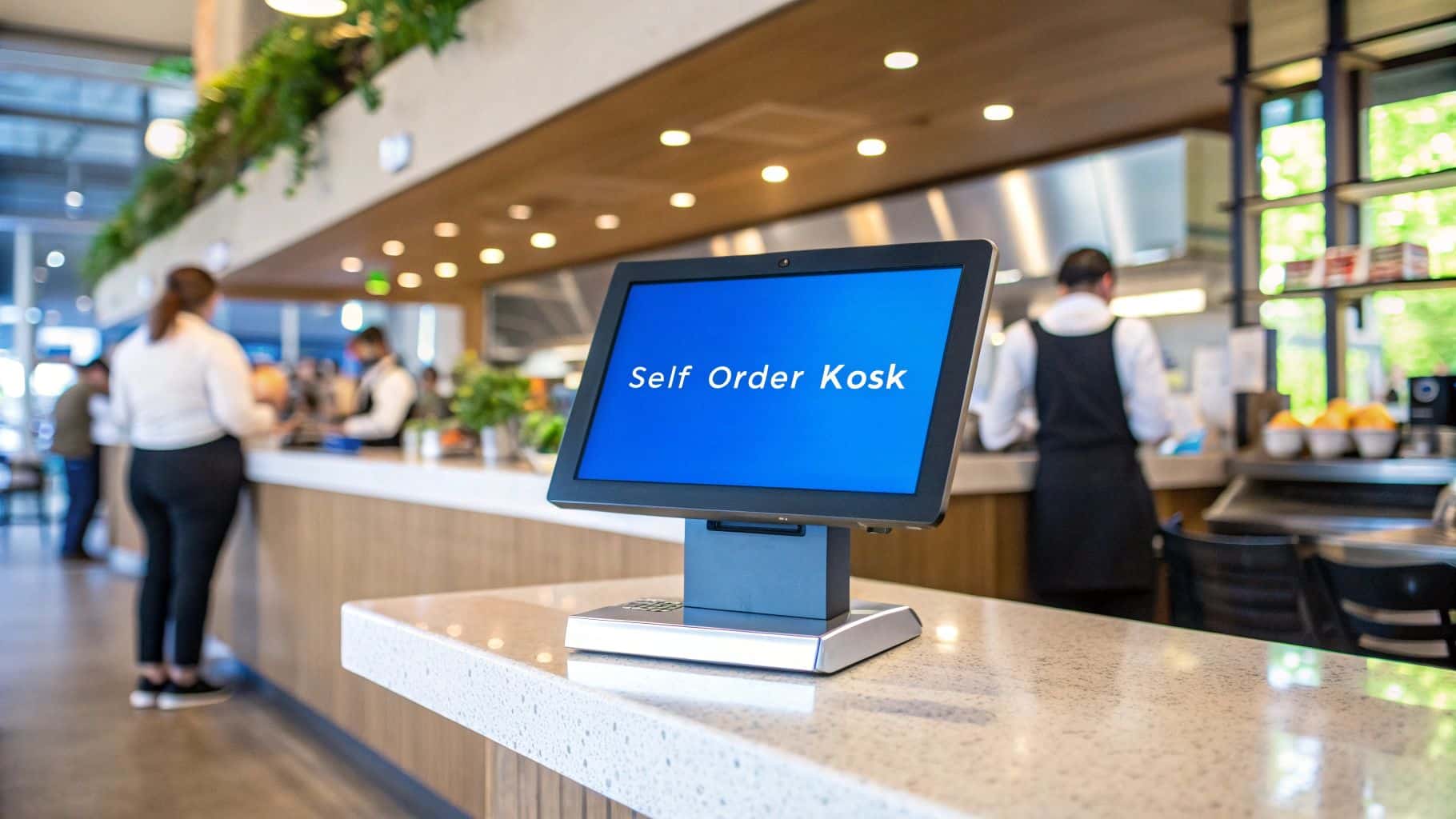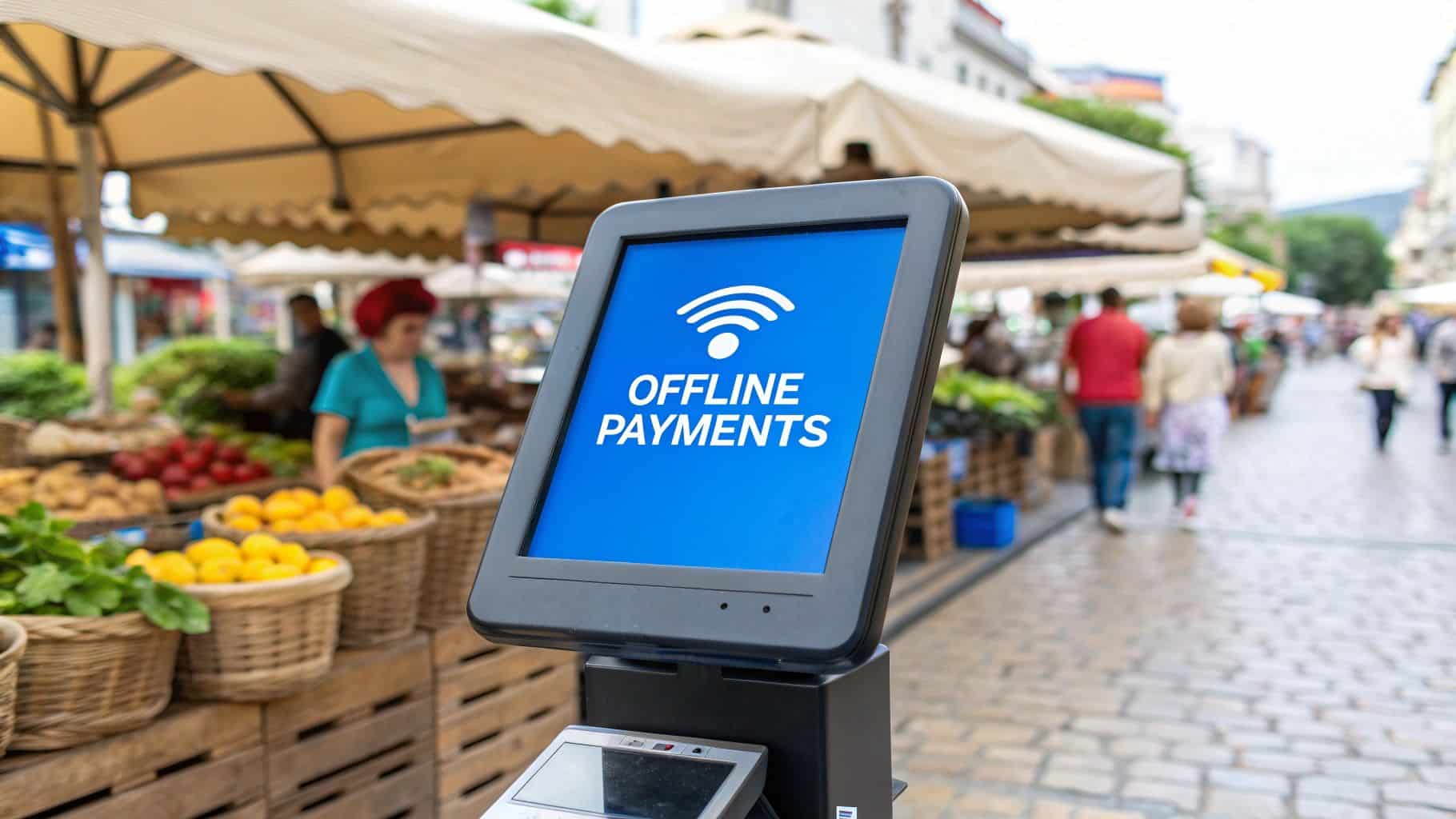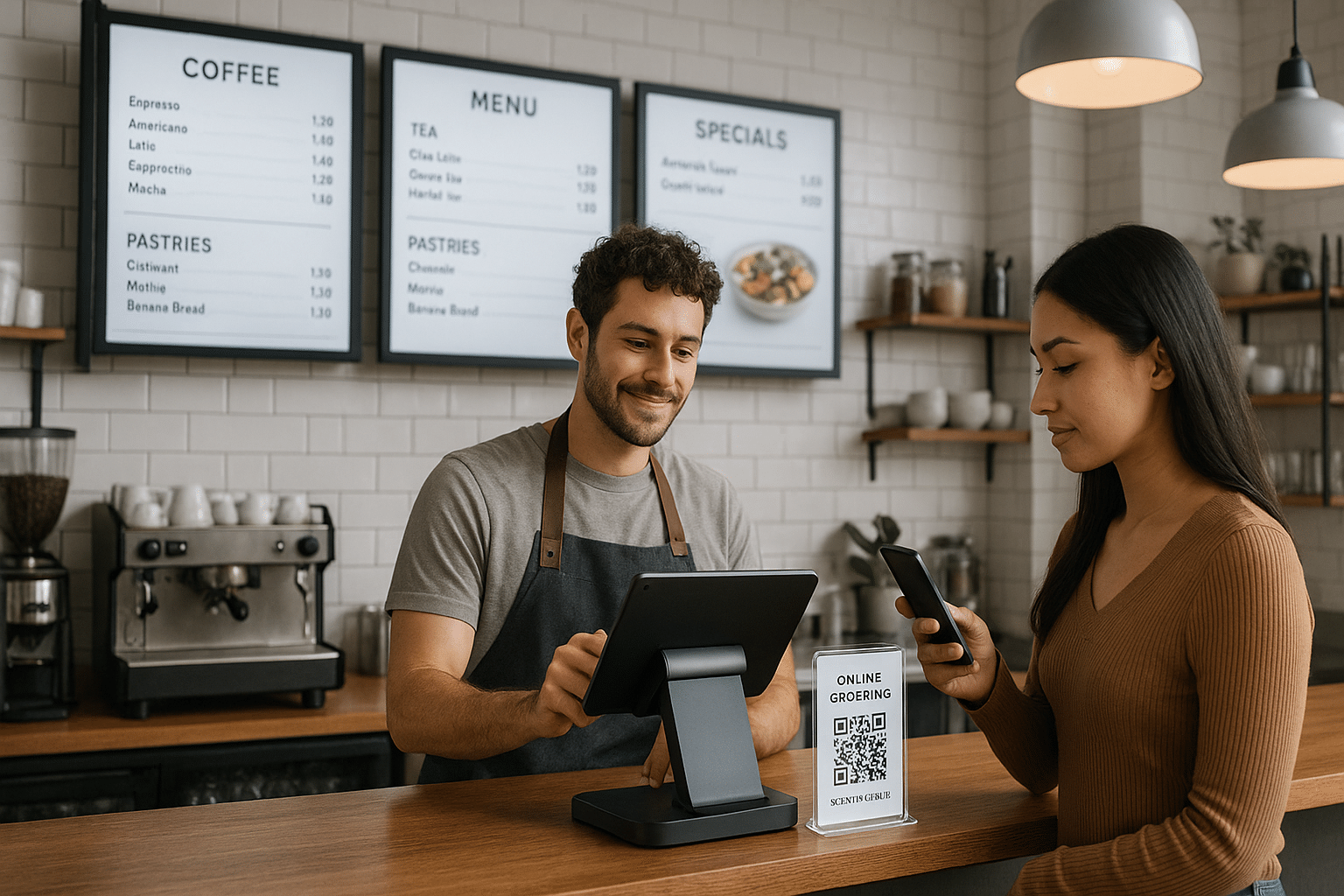Contactless payments have revolutionized the way we handle money in today’s fast-paced world. From grocery stores to cafes, this technology has become a cornerstone of modern commerce. Offering convenience, speed, and security, contactless payments allow customers to simply tap or scan and complete transactions without ever reaching for their wallets or cash. But what exactly makes this payment method so popular, and how does it work behind the scenes? In this article, we’ll dive deep into the world of contactless payments, exploring its technology, benefits, and how it’s shaping the future of financial transactions worldwide.
Table of Contents
- How Contactless Payments Work
- Security Features Behind Contactless Payments
- Advantages of Contactless Payments for Consumers and Merchants
- Emerging Technologies in Contactless Payments
- Future Trends and Adoption of Contactless Payments
- About Biyo POS
- FAQ
How Contactless Payments Work
Contactless payments rely on advanced wireless technologies that enable fast and effortless transactions. These payment methods eliminate the need for physical contact between the card or device and the payment terminal, allowing users to complete purchases with a simple tap or scan. Understanding the underlying technology is key to appreciating the convenience contactless payments offer.
Near Field Communication (NFC) Technology
NFC technology forms the backbone of many contactless payments. It works by establishing a secure, short-range wireless connection between two devices — typically a payment terminal and a smartphone, smartwatch, or contactless card. This connection is activated when the devices come within just a few centimeters of each other, making the transaction quick and effortless. The NFC chip in the device exchanges encrypted payment information with the terminal in less than a second, allowing for immediate authorization.
What makes NFC especially valuable is its compatibility with many devices and its ability to support multiple payment formats. For example, when you tap your smartphone at a checkout counter, the NFC chip communicates not only with the terminal but also interacts with secure elements inside your phone’s hardware to protect your data. This technology ensures that sensitive information, like your card number, is never exposed during the transaction. Retailers worldwide have adopted NFC technology because it streamlines the payment process while maintaining high security standards.
In addition, NFC supports other uses beyond payments, such as access control or ticketing, showcasing its versatility. For instance, many transit systems have integrated NFC-enabled cards or phones for seamless boarding experiences, reducing lines and speeding up service. This flexibility means NFC continues to expand its role in contactless payments and related wireless interactions.
Mobile Wallets and Digital Wallets
Mobile wallets and digital wallets are the user-facing side of contactless payments, acting as secure virtual containers for your payment cards and personal information. Apps like Apple Pay, Google Wallet, and Samsung Pay allow users to load multiple credit and debit cards, loyalty cards, and even transit passes into one easy-to-access location on their devices. This eliminates the need to carry physical cards and reduces the chance of loss or theft.
When you make a payment using a mobile wallet, the app generates a unique digital token instead of transmitting your actual card details. This token is sent through the NFC channel or via QR code scanning to the payment terminal, ensuring that your real card number remains protected throughout the process. This method is especially beneficial when making purchases in crowded or public settings, where skimming and card cloning are risks.
Moreover, mobile wallets integrate biometric authentication — such as fingerprint scans, facial recognition, or PIN codes — to verify that you are the authorized user before allowing the payment to go through. This extra security step enhances confidence in the transaction process and helps prevent fraudulent use if your phone or device is lost. The seamless experience combined with these safety measures makes mobile wallets a leading choice for contactless payments worldwide.
QR Code Scanning and RFID Payments
While NFC dominates the contactless payment landscape in many regions, QR code scanning offers a widely accessible alternative, particularly in areas where NFC-enabled terminals are not yet common. This method involves a customer scanning a merchant-displayed QR code with their smartphone camera using a banking or payment app. The QR code encodes payment details such as the merchant’s account or the transaction amount, which the app processes to complete the payment quickly and securely.
QR code payments have gained popularity for their low setup costs and versatility. Small businesses, street vendors, and markets often prefer QR codes because they do not require expensive hardware installations; a simple printed code suffices. Customers appreciate this method’s simplicity and its compatibility with nearly all smartphones, regardless of make or model.
Radio Frequency Identification (RFID) payments, closely related to NFC, extend contactless payment capabilities into wearables like smart rings, wristbands, and even clothing accessories embedded with RFID chips. These devices communicate wirelessly with payment terminals at slightly longer distances than NFC, allowing users to pay with just a wave or tap. For instance, fitness trackers equipped with RFID can be used at gyms or cafes for quick payments without interrupting an active lifestyle. The fusion of RFID technology and wearable devices highlights the growing trend toward more natural, effortless payment interactions.
Security Features Behind Contactless Payments
Security remains a central concern in the adoption of contactless payments. Despite the convenience of wireless transmission, contactless payment systems incorporate multiple layers of protection to prevent fraud, data breaches, and unauthorized use. By leveraging state-of-the-art security features, these systems ensure that users can transact with peace of mind.
Tokenization and Encrypted Payments
Tokenization is one of the most effective security methods used in contactless payments. It replaces the sensitive card data, like the card number and expiration date, with a randomly generated token that is unique to each transaction. This token has no exploitable value outside that specific payment session. Even if a hacker intercepts the token during transmission, they cannot use it to make fraudulent purchases or access your real card information.
Encryption further protects data by transforming it into a coded format during transmission from the payment device to the terminal and then to the payment processor. The encrypted information can only be decrypted by authorized parties, preventing third-party interception or tampering. The combination of tokenization and encryption significantly reduces risks associated with wireless payment methods.
For example, if you tap your contactless card at a store, your actual card number is never sent over the network. Instead, a token and encrypted data ensure that your transaction is authenticated securely and efficiently. This approach has made contactless payments one of the safest methods available today.
Biometric Authentication and Device Security
Biometric authentication has become a vital security feature integrated into many contactless payment systems. Before authorizing a payment, users often verify their identity using fingerprint scans, facial recognition, or even iris scanning. These biometric methods are extremely difficult to fake and provide strong proof that the person initiating the transaction is indeed the authorized owner.
In addition to biometric safeguards, devices used for contactless payments incorporate secure hardware elements known as “secure enclaves” or “trusted execution environments.” These isolated hardware zones store sensitive payment credentials and execute cryptographic operations without exposing data to the rest of the device’s software. This prevents malware or malicious apps from stealing payment information.
For instance, smartphones from major manufacturers use secure elements that comply with strict industry standards to protect stored payment data. This dual layer of biometric and hardware security ensures that even if a device is compromised in other ways, your payment credentials remain safe and inaccessible to unauthorized users.
Fraud Prevention and Transaction Limits
Contactless payments often come with built-in fraud prevention mechanisms, including limits on the maximum amount allowed per transaction without additional verification. For example, in many countries, transactions above a certain threshold require the user to enter a PIN or provide biometric authentication, reducing the chance that stolen cards or devices can be used for large purchases.
Payment processors and banks also use machine learning and behavioral analytics to monitor transaction patterns in real-time. These systems flag unusual spending behavior or locations and can temporarily block suspicious transactions or alert customers immediately. This proactive monitoring helps prevent fraud before significant losses occur.
Merchants benefit from these fraud prevention measures because they reduce chargebacks and maintain customer trust. By balancing convenience with safety, contactless payments ensure that both parties in the transaction are protected.
Advantages of Contactless Payments for Consumers and Merchants
The rise of contactless payments is fueled by the significant advantages they provide to both consumers and merchants. These benefits enhance the overall shopping experience while streamlining operations and boosting security.
Fast Checkout and Seamless Payment Experience
Contactless payments dramatically speed up the checkout process by removing the need to swipe cards, enter PINs for small amounts, or handle cash. Customers can simply tap their card or device and move on. This reduction in transaction time minimizes queues and waiting periods, especially in busy retail stores or restaurants.
For merchants, faster checkout means they can serve more customers in less time, increasing daily sales and improving customer satisfaction. A smooth and seamless payment process also creates a positive impression of the brand, encouraging repeat visits and customer loyalty. In environments such as coffee shops or fast-food outlets, where speed is paramount, contactless payments become an essential tool to handle high volumes efficiently.
The convenience extends beyond speed. Contactless payments are also intuitive and user-friendly, requiring minimal effort or instruction. This ease of use helps merchants appeal to a broader demographic, including tech-savvy users and those new to digital payment methods.
Cardless Payments and Convenience
The ability to make cardless payments is a major appeal of contactless technology. Consumers no longer need to carry bulky wallets stuffed with cards and cash. Instead, they can rely on mobile wallets, smartwatches, or even wearable rings embedded with payment capabilities. This is particularly useful for on-the-go situations such as exercising, commuting, or quick errands.
For example, a runner stopping by a cafe can pay with a wristband or phone without slowing down to search for cash or cards. Similarly, parents with hands full of groceries or children can complete transactions without fumbling through bags. The convenience factor also reduces friction during checkout, decreasing the likelihood of abandoned purchases.
Furthermore, cardless payments allow users to manage their finances digitally. Many mobile wallets integrate with budgeting tools, transaction histories, and loyalty programs, offering a comprehensive financial overview at their fingertips. This digital convenience aligns well with modern lifestyles and increasing smartphone reliance.
Enhanced Customer Trust Through Secure Transactions
Security is a critical factor influencing consumer confidence in contactless payments. The layered protections — such as tokenization, biometric authentication, and encrypted transmissions — ensure that transactions are not only fast but also safe from fraud and identity theft. Customers who feel secure are more likely to adopt and continue using contactless payment methods.
For merchants, promoting secure payment options strengthens brand reputation and builds trust with customers. Highlighting features like encrypted payments and fraud prevention can differentiate a business from competitors, especially in industries where data breaches are a growing concern.
Moreover, secure contactless payments help reduce operational risks associated with cash handling, such as theft or loss. This creates a safer environment for employees and reduces administrative burdens, adding another layer of value for businesses embracing this technology.
Emerging Technologies in Contactless Payments
Innovation in the payment sector continues to push contactless payments into new realms, improving both user experience and security. Exploring emerging technologies gives insight into what the future holds for contactless transactions.
Wearable Payments and IoT Integration
Wearable payments are an exciting development where contactless technology merges with smart accessories such as watches, rings, and even clothing embedded with RFID or NFC chips. This integration allows users to pay without pulling out their phones or cards, offering unparalleled convenience in daily life.
For instance, a smartwatch wearer can tap their wrist at a retail terminal to pay instantly, which is ideal for situations like jogging or commuting. Moreover, the Internet of Things (IoT) is expanding payment capabilities to connected devices beyond personal wearables. Imagine a smart refrigerator that can reorder groceries and complete the payment automatically or a connected car paying tolls without stopping. These innovations signify a future where payments blend invisibly into everyday activities.
As the IoT ecosystem grows, contactless payments will become part of larger automated systems, enabling frictionless commerce that requires minimal user intervention. This progression will further reduce barriers to adoption and elevate consumer convenience.
Biometric Authentication Beyond Mobile Wallets
While biometric authentication currently protects mobile wallets, its use is expanding to payment terminals themselves. Some advanced contactless systems now integrate fingerprint or facial recognition directly into checkout kiosks or point-of-sale devices, providing real-time identity verification without slowing down the payment process.
This advancement means that even card-present transactions can benefit from biometric security, enhancing fraud prevention. For example, a store might install a scanner that recognizes the shopper’s fingerprint in milliseconds to approve a contactless payment, combining speed with robust authentication.
Looking ahead, emerging biometric techniques such as voice recognition or behavioral biometrics — which analyze how a person interacts with their device — may further secure contactless payments. These technologies will help tailor security dynamically, reducing false declines while catching fraudulent attempts efficiently.
Advanced Payment Gateways and Tokenization Methods
Payment gateways serve as the critical infrastructure connecting consumers, merchants, and banks. They continuously evolve to support more sophisticated tokenization and encryption methods that keep pace with emerging cyber threats. Modern gateways use dynamic tokens that refresh with every transaction, ensuring intercepted data cannot be reused.
Additionally, these gateways facilitate multi-currency payments, cross-border transactions, and seamless integration with various payment methods like peer-to-peer transfers and mobile banking apps. This flexibility enables merchants to accept contactless payments from a global customer base with ease.
As gateways become more intelligent, they incorporate machine learning algorithms that assess transaction risks in real-time, further preventing fraud without compromising the user experience. These innovations make contactless payments more secure, accessible, and reliable than ever before.
Future Trends and Adoption of Contactless Payments
The contactless payment landscape is rapidly transforming, driven by consumer demand, technological innovation, and the quest for safer transactions. Understanding upcoming trends provides valuable insight into how businesses and consumers will interact with money in the near future.
Global Shift Toward Cashless Transactions
Worldwide, the shift away from cash is accelerating. Many countries are seeing a steep decline in cash usage as consumers and businesses embrace contactless and digital payment methods. This trend results from urbanization, the proliferation of smartphones, and public health concerns encouraging touch-free interactions.
Governments often support this shift to reduce costs associated with printing, distributing, and managing cash. Additionally, cashless transactions improve tax compliance and foster financial inclusion by bringing unbanked populations into formal financial systems through mobile banking and digital wallets.
This global movement toward cashless societies creates opportunities for innovative payment solutions and increases the importance of adopting contactless payment technology for merchants everywhere.
Expanding Acceptance and Infrastructure Improvements
Merchant adoption of contactless payment terminals is becoming nearly ubiquitous, encompassing not only large retailers but also small businesses, public transportation, healthcare facilities, and hospitality providers. Infrastructure improvements, such as faster internet connectivity and affordable POS hardware, facilitate this widespread acceptance.
For example, contactless payment acceptance in rural and developing areas is increasing as governments and financial institutions invest in modernizing payment systems. This expansion ensures more consumers can enjoy the convenience and security of wireless payments regardless of location.
Moreover, interoperability improvements between different payment systems and platforms will allow consumers to use their preferred contactless methods seamlessly across regions and merchants, removing barriers to adoption and enhancing the user experience.
Integration with Loyalty Programs and Personalized Offers
Future contactless payment platforms will increasingly merge with marketing technologies, allowing merchants to deliver loyalty rewards, coupons, and personalized offers directly during the payment process. This integration streamlines customer engagement and provides value-added incentives for using contactless methods.
For example, a customer paying with their mobile wallet might automatically receive cashback or discounts without scanning additional codes or carrying physical coupons. Payment data also enables businesses to analyze purchasing patterns and tailor promotions specifically to individual preferences while maintaining privacy safeguards.
By combining payment convenience with personalized marketing, contactless payments will evolve into powerful tools that drive sales, improve retention, and enhance overall customer satisfaction.
About Biyo POS
Biyo POS offers an innovative, all-in-one point of sale system designed to leverage the power of contactless payments fully. Supporting NFC technology, mobile wallets, tokenization, and biometric authentication, Biyo POS ensures fast, secure, and seamless transactions for restaurants, cafes, and retailers. Its AI voice assistant for ordering and real-time order integration elevate the customer experience, enabling businesses to operate more efficiently and competitively.
By choosing Biyo POS, businesses gain a reliable technology partner that helps them accept cardless payments, wearable payments, and other wireless payment options effortlessly. This future-ready platform is tailored to meet the demands of today’s cashless economy, ensuring merchants stay ahead of the curve while offering their customers the convenience and security they expect.
FAQ
What devices support contactless payments?
Contactless payments are supported by a broad range of devices, including physical credit and debit cards embedded with NFC chips, smartphones equipped with mobile wallet apps such as Apple Pay or Google Wallet, smartwatches like the Apple Watch or Samsung Galaxy Watch, and various wearable devices such as RFID-enabled rings or fitness trackers. These devices communicate wirelessly with payment terminals within a few centimeters, enabling quick and secure transactions. Additionally, QR code scanning apps on smartphones can facilitate contactless payments where NFC is unavailable, ensuring accessibility to almost all users regardless of their device preferences.
Is contactless payment secure?
Yes, contactless payments are designed with multiple security layers to protect users. Technologies like tokenization ensure that sensitive card details are replaced with unique digital tokens during each transaction, preventing data theft. Encryption scrambles data as it moves from device to terminal and on to payment processors, keeping it inaccessible to malicious actors. Many systems also require biometric authentication, such as fingerprints or facial recognition, to confirm user identity before processing payments. Furthermore, payment gateways monitor transactions for unusual activity and impose transaction limits to reduce fraud risk, making contactless payments among the safest payment methods available today.
Are there transaction limits for contactless payments?
Yes, many countries and card issuers set transaction limits on contactless payments without PIN entry to enhance security. These limits typically range between $25 and $100, depending on the region and financial institution. If a transaction exceeds this limit, the payment terminal will prompt the customer to enter a PIN, provide a signature, or complete biometric authentication to verify their identity. These controls help prevent unauthorized high-value transactions in case of lost or stolen cards or devices, striking a balance between convenience and security.
Can I use contactless payments for online purchases?
Contactless payments primarily apply to in-person transactions where a device physically communicates with a payment terminal. However, mobile wallets that support contactless payments also facilitate fast and secure online purchases. When shopping online, users can select their mobile wallet as a payment option, which leverages the stored payment credentials and authentication mechanisms to complete transactions without manually entering card details. This approach streamlines the checkout process on websites and apps, providing the same security and convenience associated with contactless in-store payments.
How does contactless payment benefit merchants?
Merchants benefit significantly from contactless payments in several ways. First, faster checkout times reduce queues and increase throughput, allowing more customers to be served efficiently during busy periods. Second, the reduction in cash handling lowers the risk of theft and human error, streamlining back-office operations. Third, the enhanced security features help prevent fraud and reduce costly chargebacks. Additionally, merchants can attract a wider customer base by offering modern, convenient payment options that align with consumer preferences. The overall improvement in transaction speed, security, and customer satisfaction translates into higher sales and better business performance.






